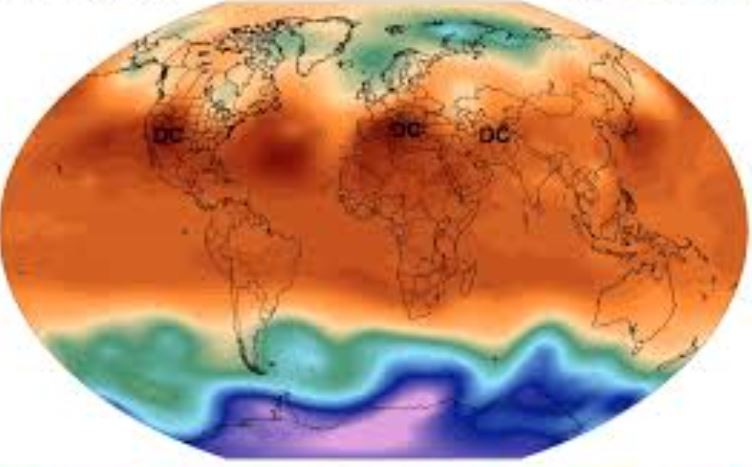
AS EXTREME HEAT DOMES CONTINUE, SIX SIMPLE STEPS CAN REDUCE AG-GENERATED NITROUS OXIDE AND OTHER GREENHOUSE GASSES THAT CONTRIBUTE TO CLIMATE CHANGE
As the world contemplates the hottest month in recorded history, agriculture scientists report that six simple farm stewardship practices could dramatically reduce ag-generated nitrous oxide emissions. Nitrous oxide is a greenhouse gas that is 300 times more powerful than carbon dioxide; one of its significant sources is the use of synthetic fertilizers.
Recommended farm stewardship practices to improve soil health and reduce nitrous oxide emissions include:
1. Reduce inputs, i.e., the amount of fertilizer and pesticides that are applied;
2. Rotating crops;
3. Adopting cover crops;
4. Changing tillage practices;
5. Targeted planting of strips of grasses, trees and shrubs;
6. Implement a Drainage Water Management (DWM) system to manage drainage tile water levels with a water control structure.
Implementing these recommended practices could reduce farm-generated nitrous oxide emissions significantly, especially if implemented on a widespread basis.
A model developed by the Department of Agriculture and Colorado State University, the Carbon Management and Emissions Tool, or COMET-Planner, evaluates the greenhouse gas impacts of agricultural conservation practices. Because 65 percent of nitrogen fertilizer is used to grow corn, conservation practices implemented on farmland used to grow corn can make a big dent in agricultural nitrous oxide emissions.
Emissions-reducing practices also provide other benefits, such as improved water quality and wildlife habitat. Many of these practices, like rotating corn with soybeans and planting cover crops between growing seasons, are already routinely recommended, and have yielded proven benefits for farmers.
Nitrous oxide emissions also can be lowered through other climate-smart conservation practices, such as changing the type or amount of fertilizer used or the timing of fertilizer applications. Alterations in fertilizer use are especially significant for farmers in coastal states like Florida, where fertilizer run-off into lakes and waterways has produced red algae blooms and other deleterious effects on the environment.
Agriculture currently accounts for at least 11 percent of U.S. greenhouse gas emissions. This proportion could grow to more than 30 percent by 2050. Over half of U.S. agriculture’s emissions are in the form of nitrous oxide, but very little USDA conservation funding has gone to practices that reduce nitrous oxide and other emissions. Specifically, only 23 percent of Environmental Quality Incentive Program, or EQIP, funding between 2017 and 2020 went to “climate-smart” practices that can cut on-farm emissions. Only 5 percent of Conservation Stewardship Program, or CSP, funding went to these practices.
EQIP funding for NO2-reducing conservation practices.
NO2-reducing practice EQIP funding 2017-2022 % of EQIP funding
Cover crop $500,958,633 9.4%
Tree/shrub establishment $116,910,201 2.2%
Crop rotation $48,713,010 0.9%
Better tillage $35,833,917 0.7%
Grassed waterway $23,206,984 0.4%
Filter strip $94,759 0.0%
Fortunately, Congress significantly increased funding for “climate-smart” practices in the bi-partisan Inflation Reduction Act of 2022 signed into law by President Joe Biden which provided $19.5 billion over four years for agriculture initiatives focused on ameliorating the negative effects of climate change. Unfortunately, as negotiations over the 2023 Farm Bill continue, some members of Congress are seeking to cut funding for climate-smart practices in order to expand farm subsidies – even though these proposals would reduce farm spending in 38 states.
As much of America’s farmlands swelters under extreme summer heat, Congress should reject efforts to divert climate-smart ag-funding. Instead, Congress and the Executive Branch should continue reforming USDA conservation programs to make climate a top priority.
#climatechange #agconservation #InfationReductionAct #extremesummerheat #heatdome #farmstewardship